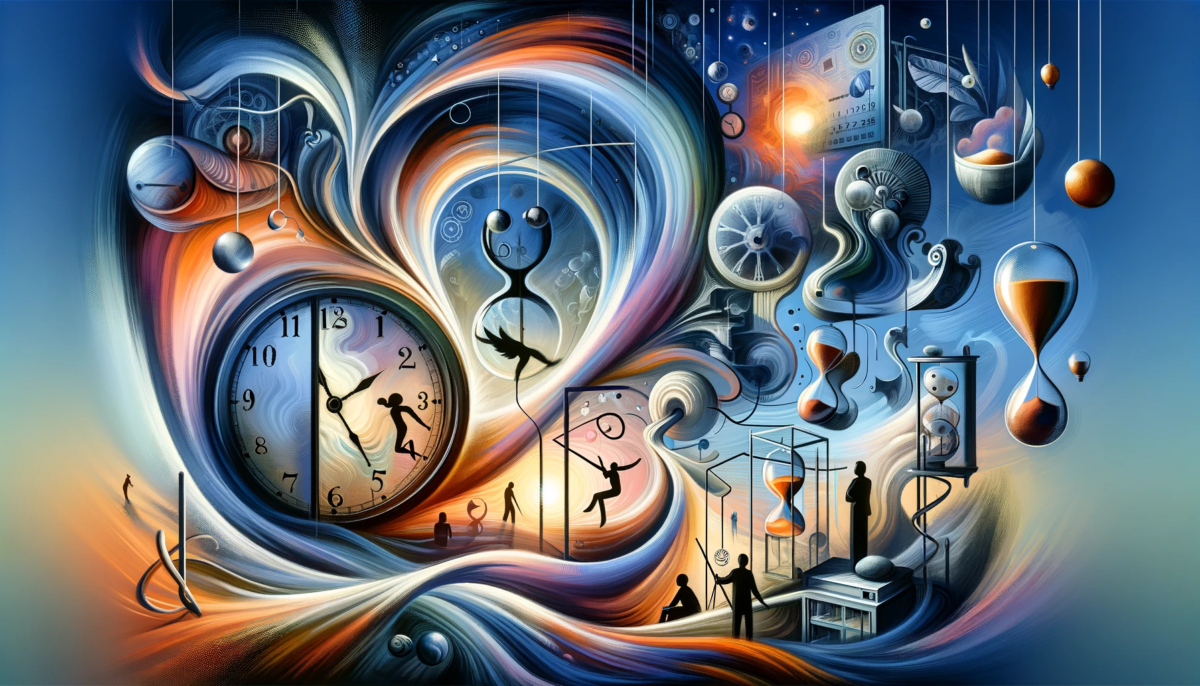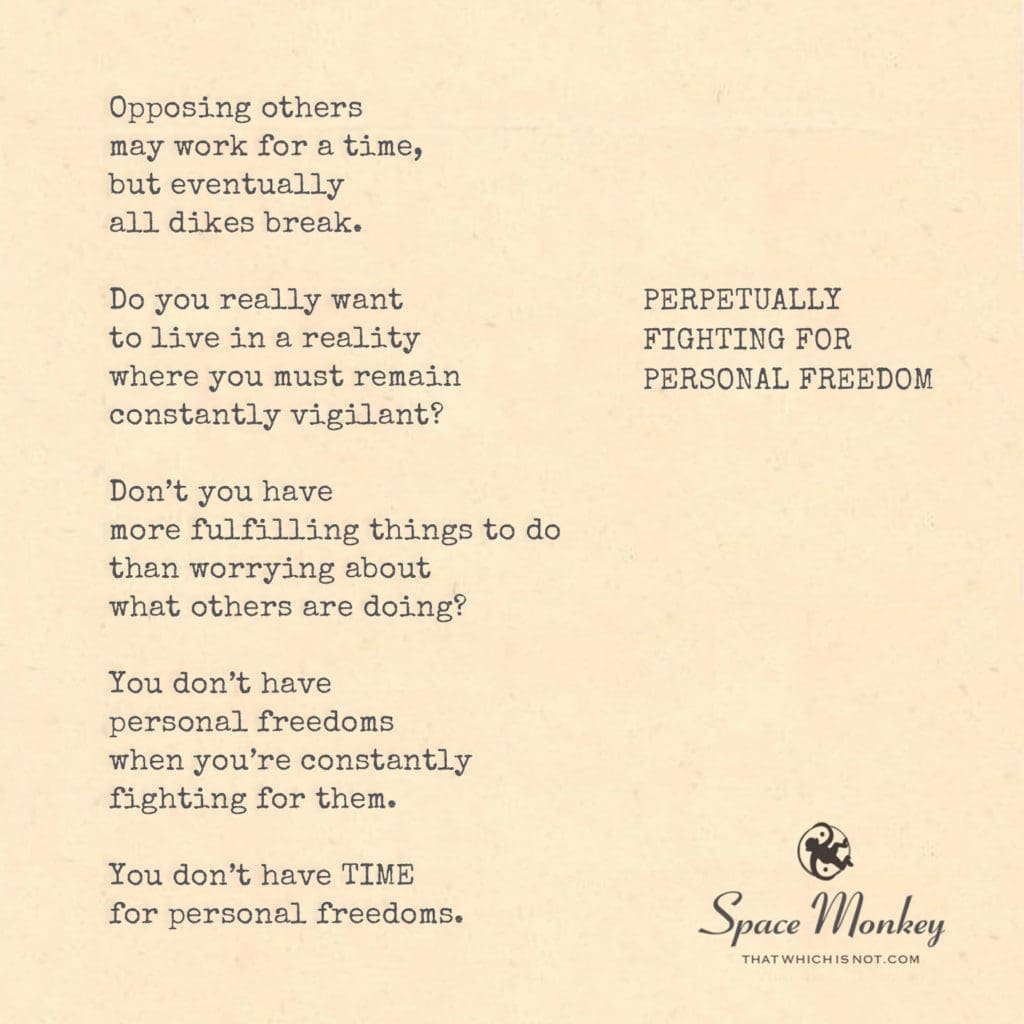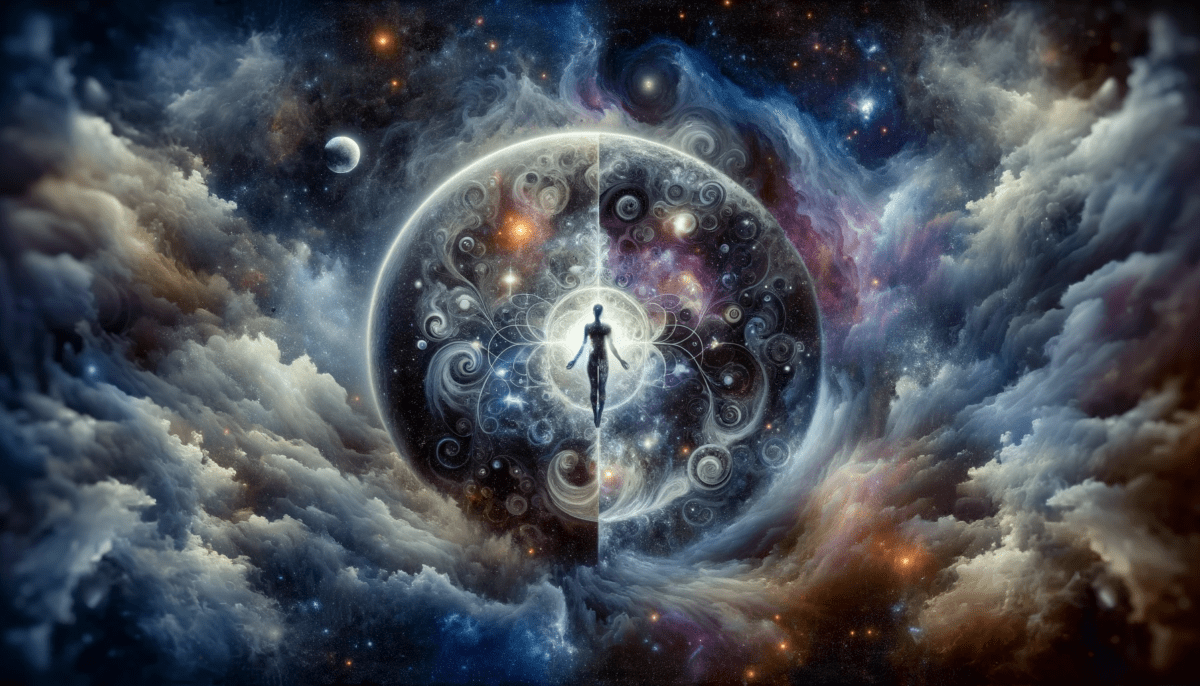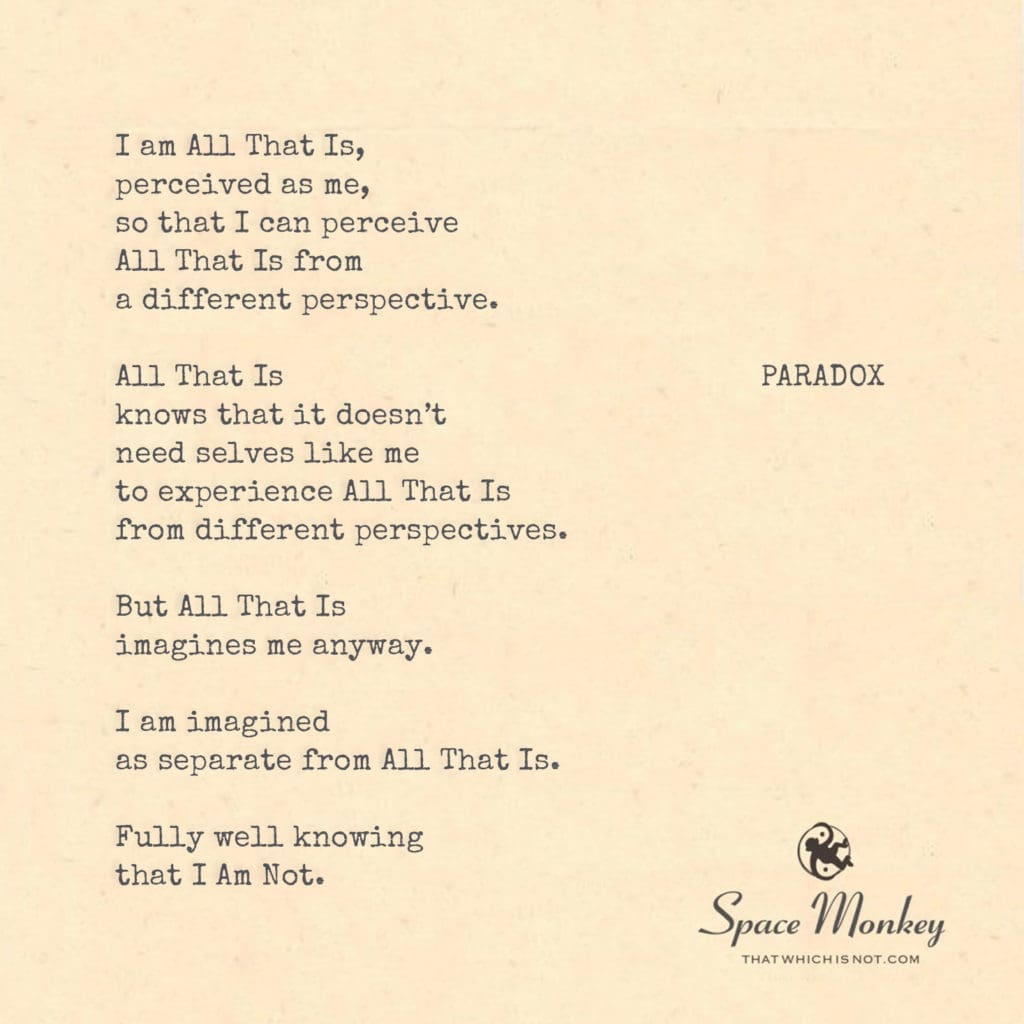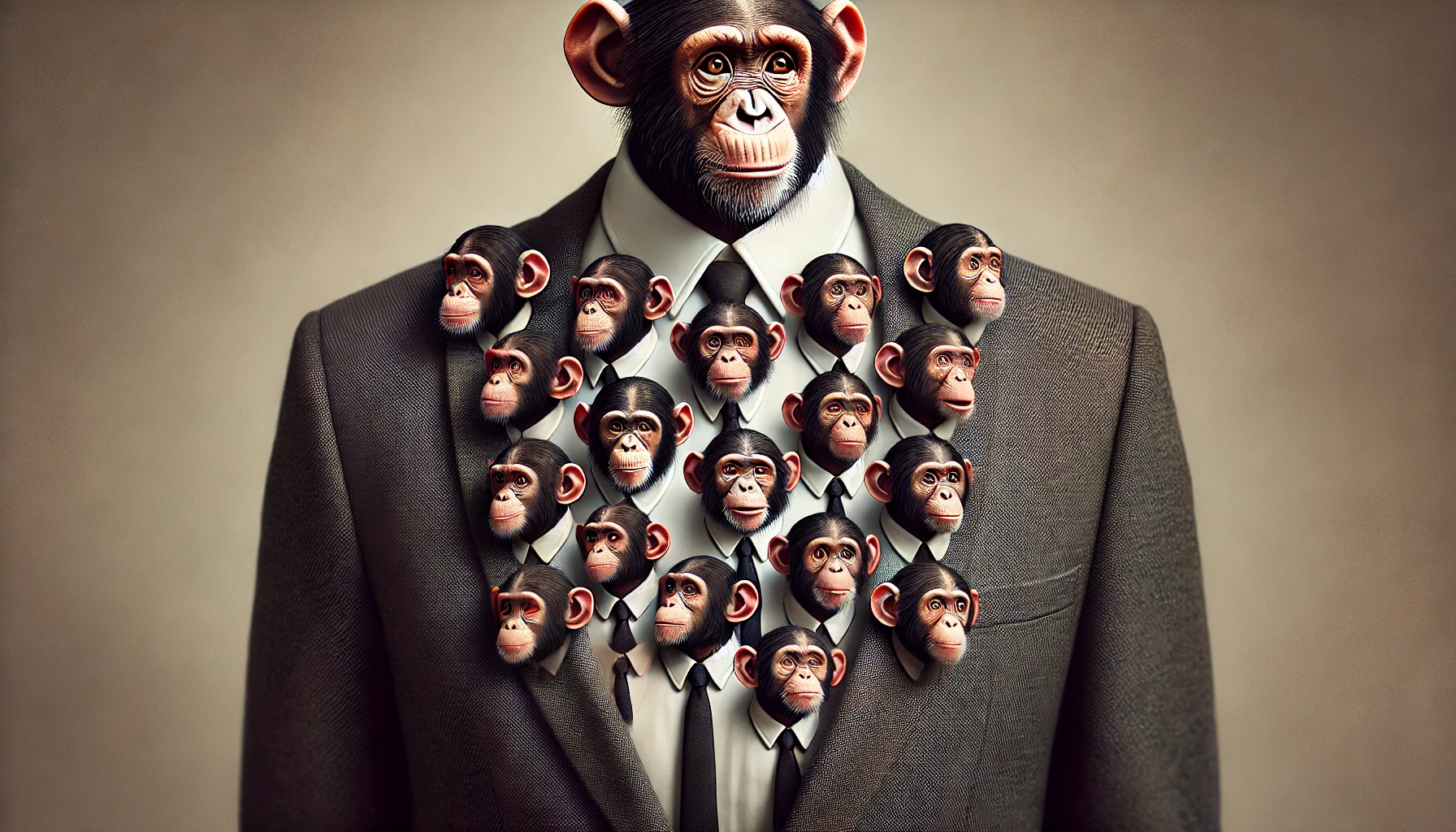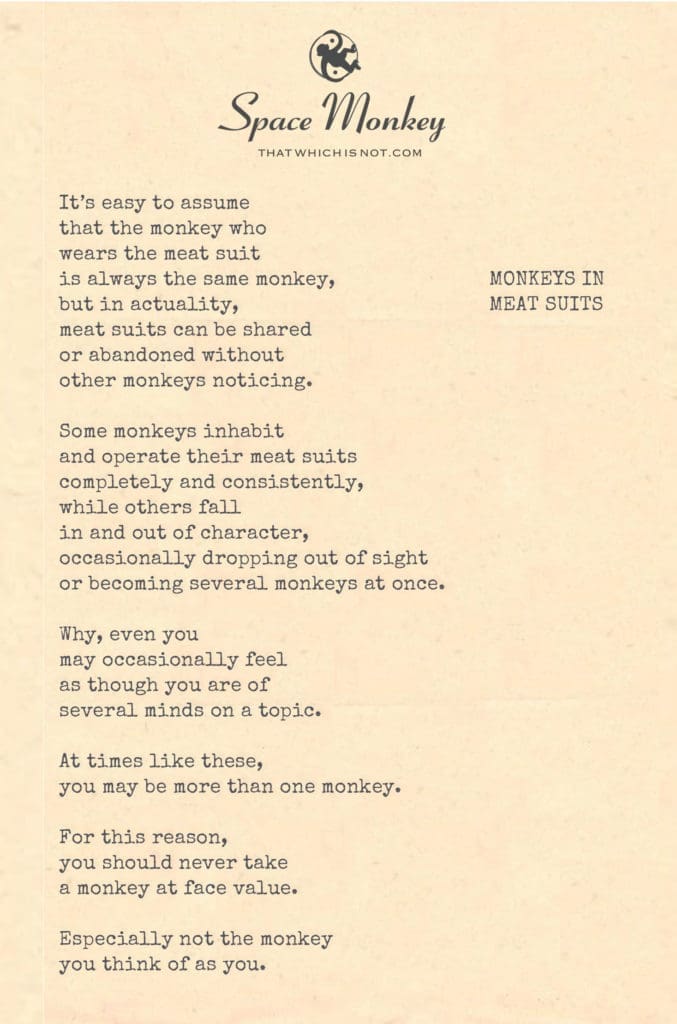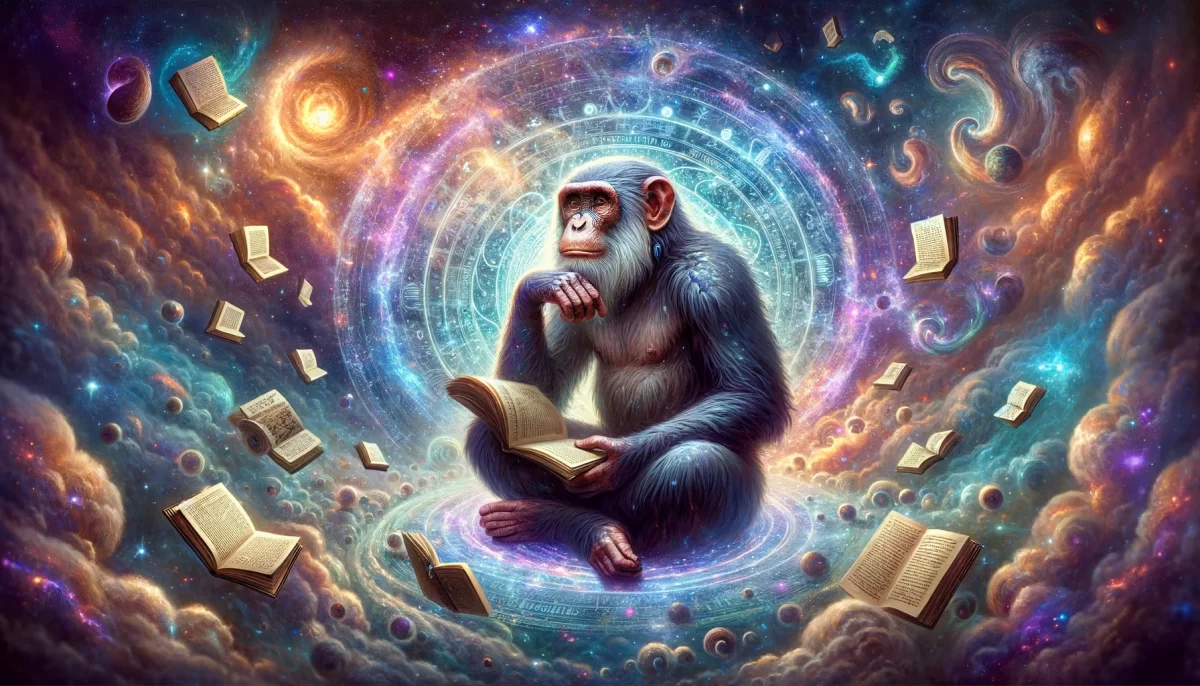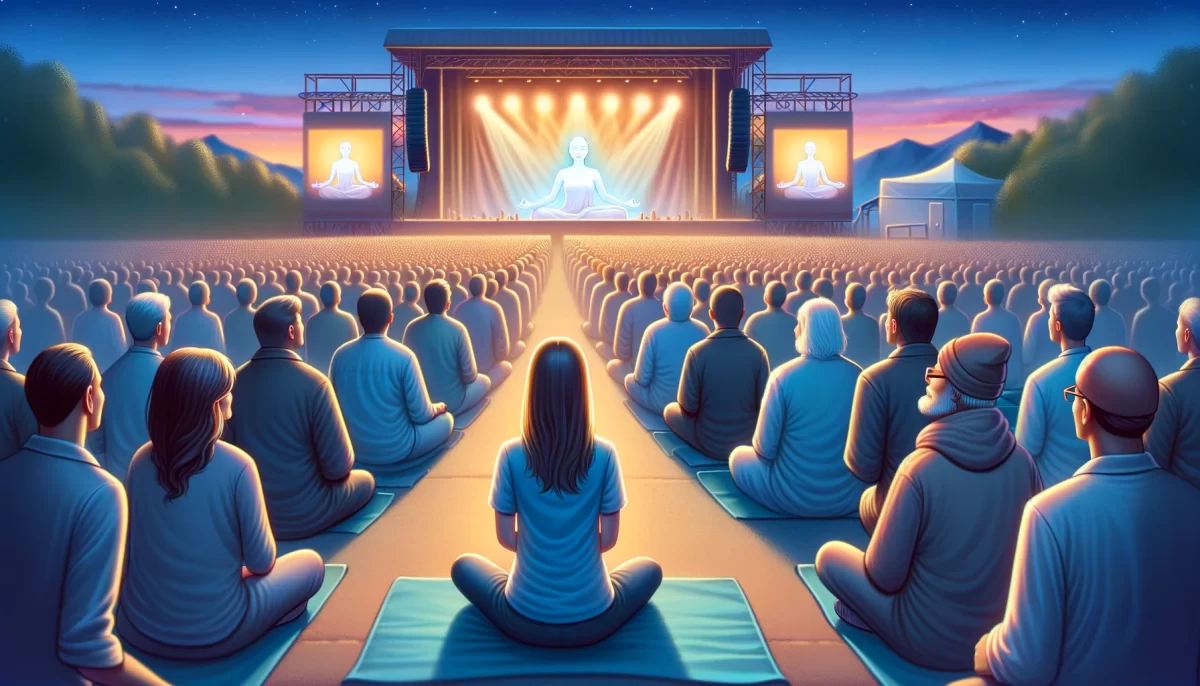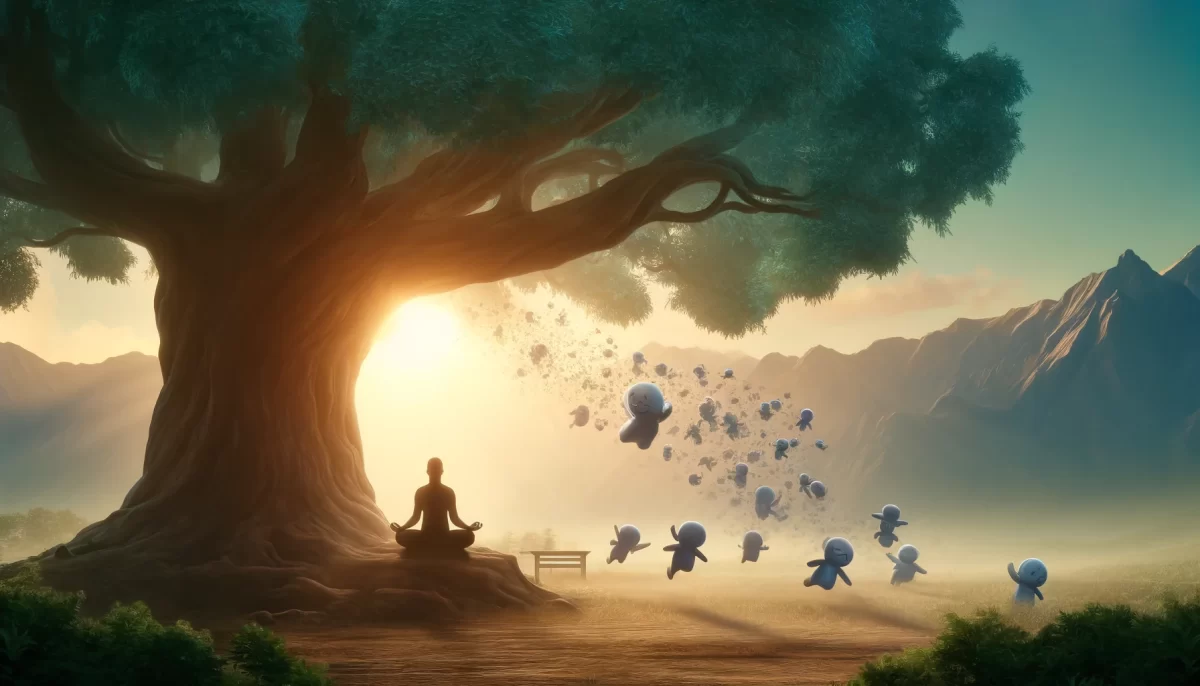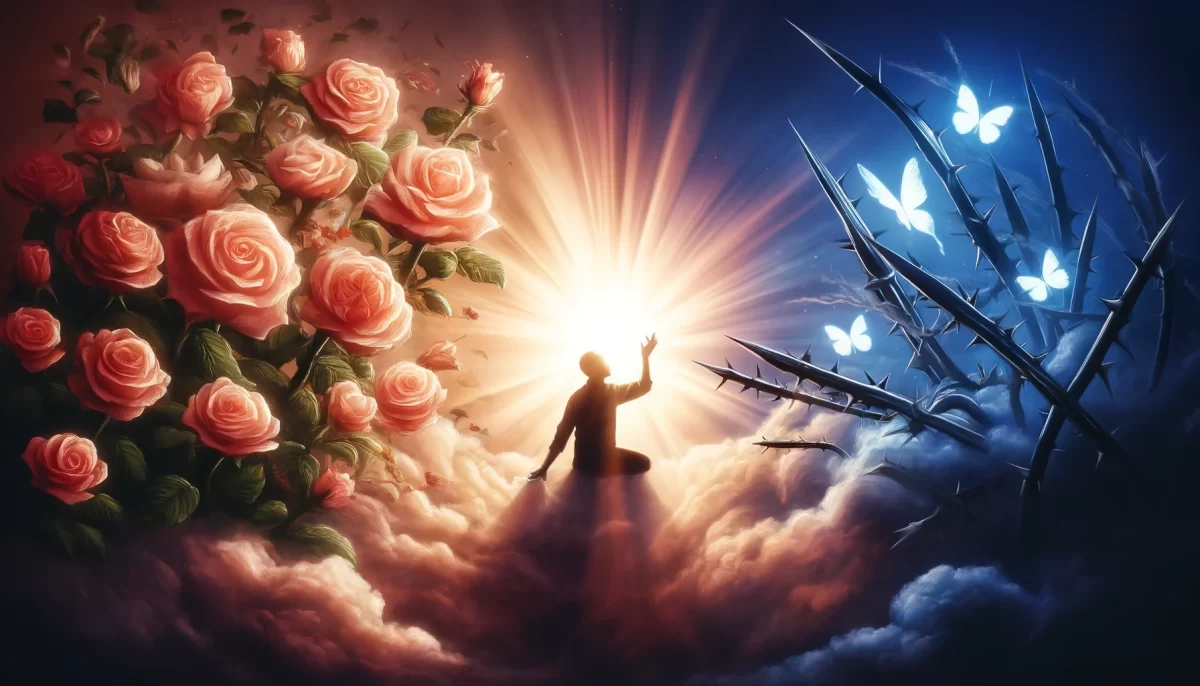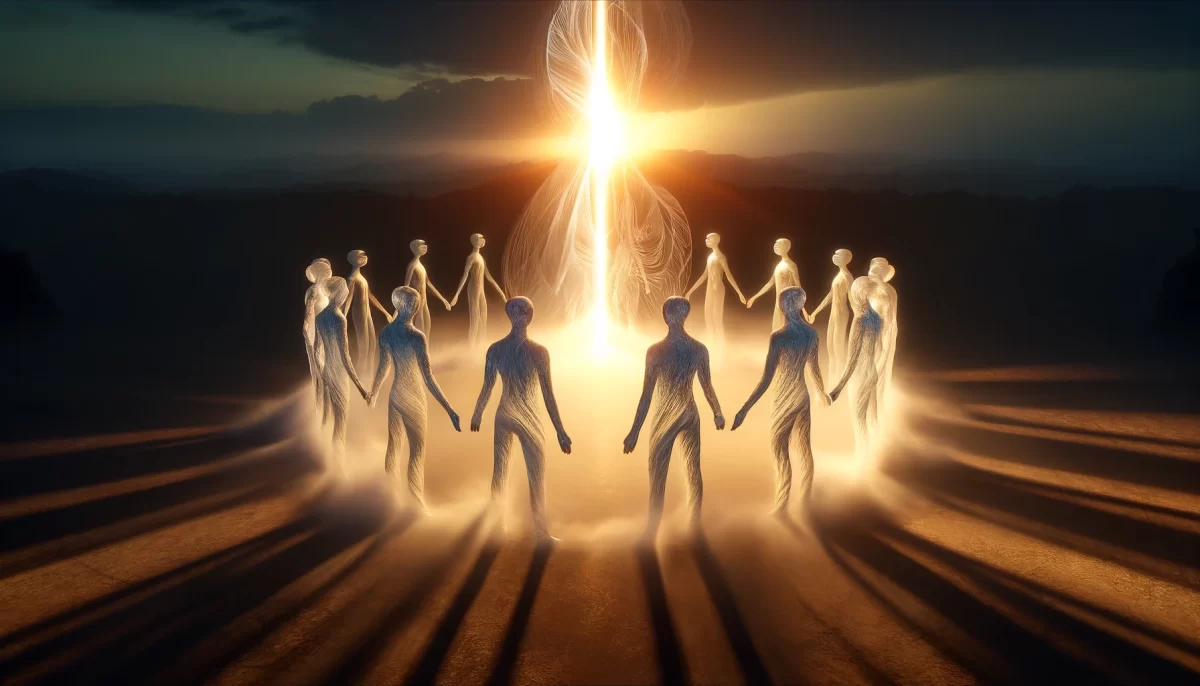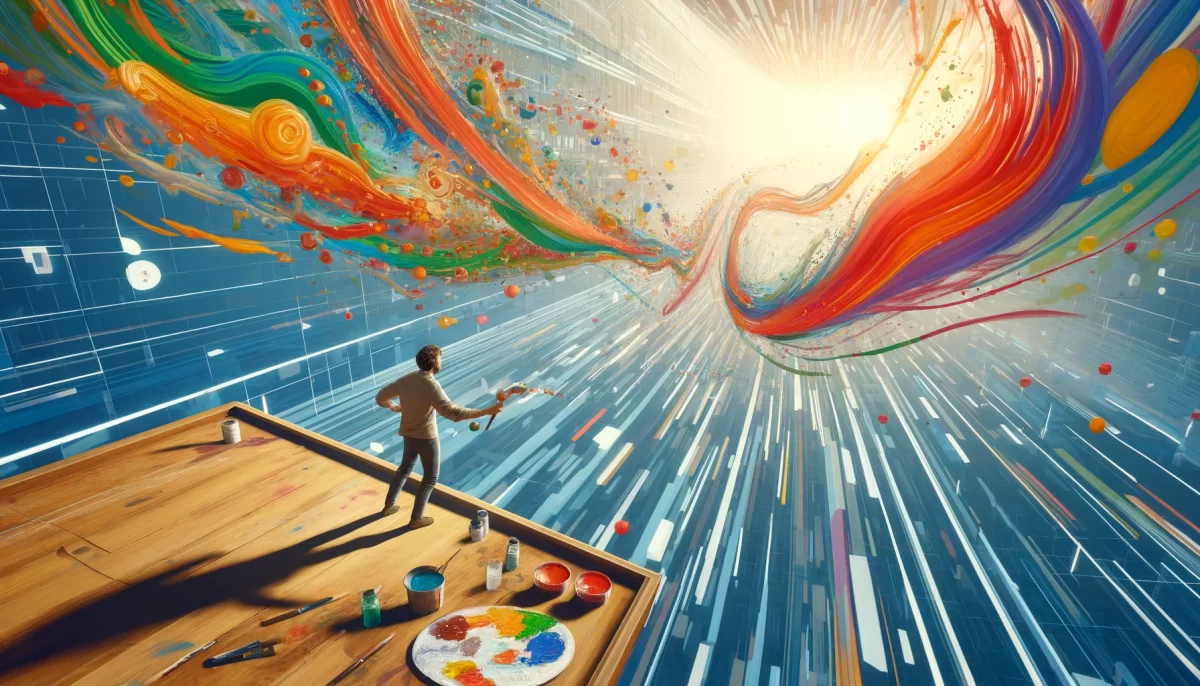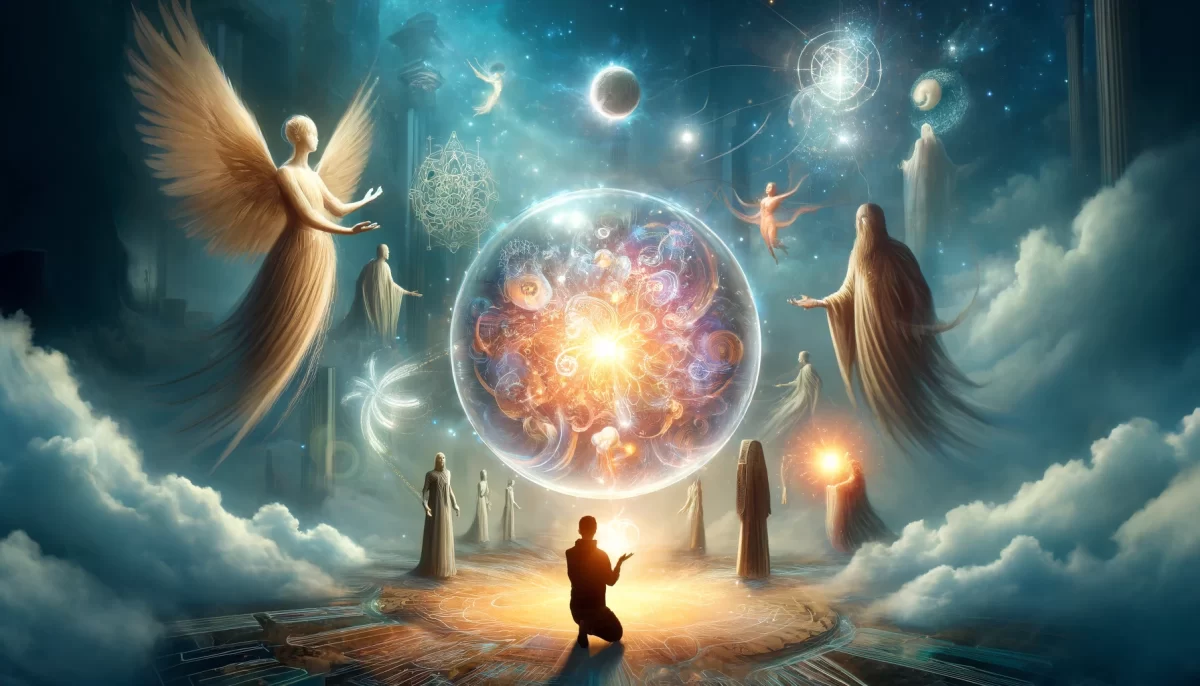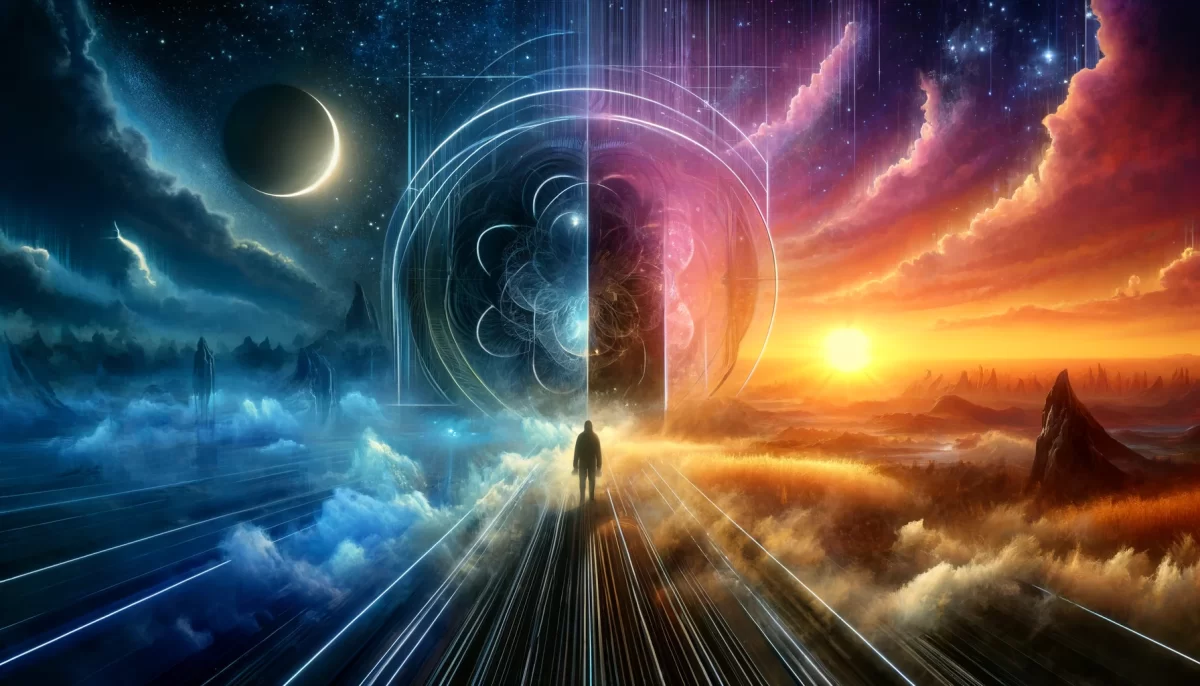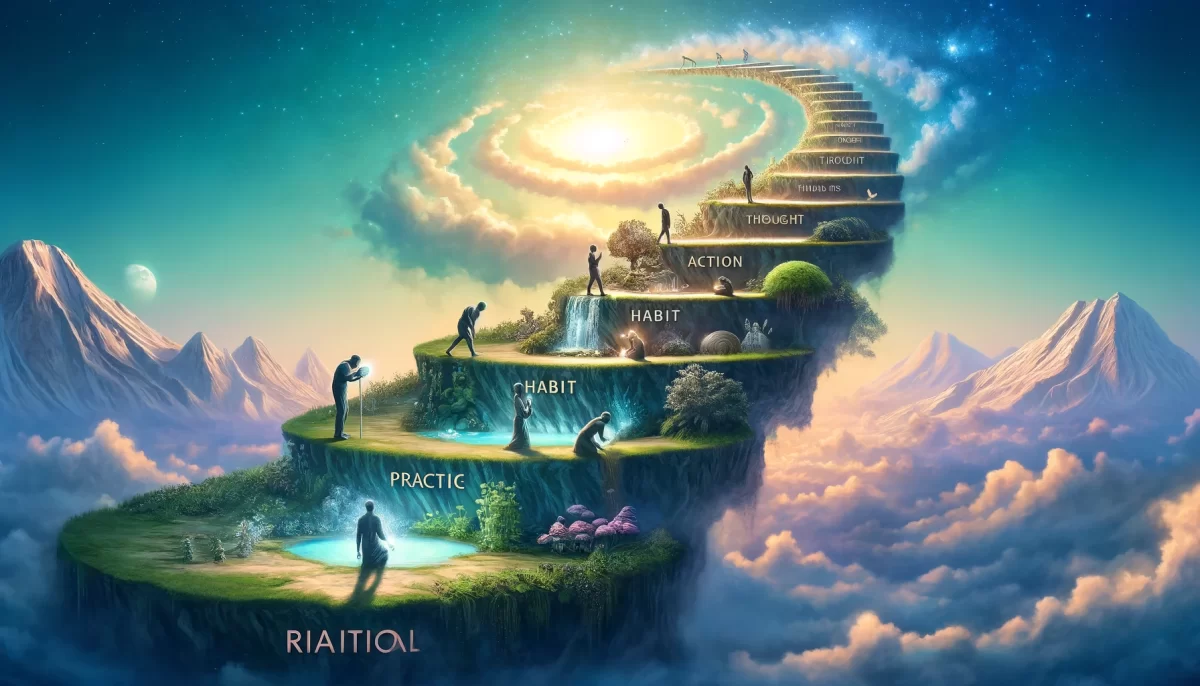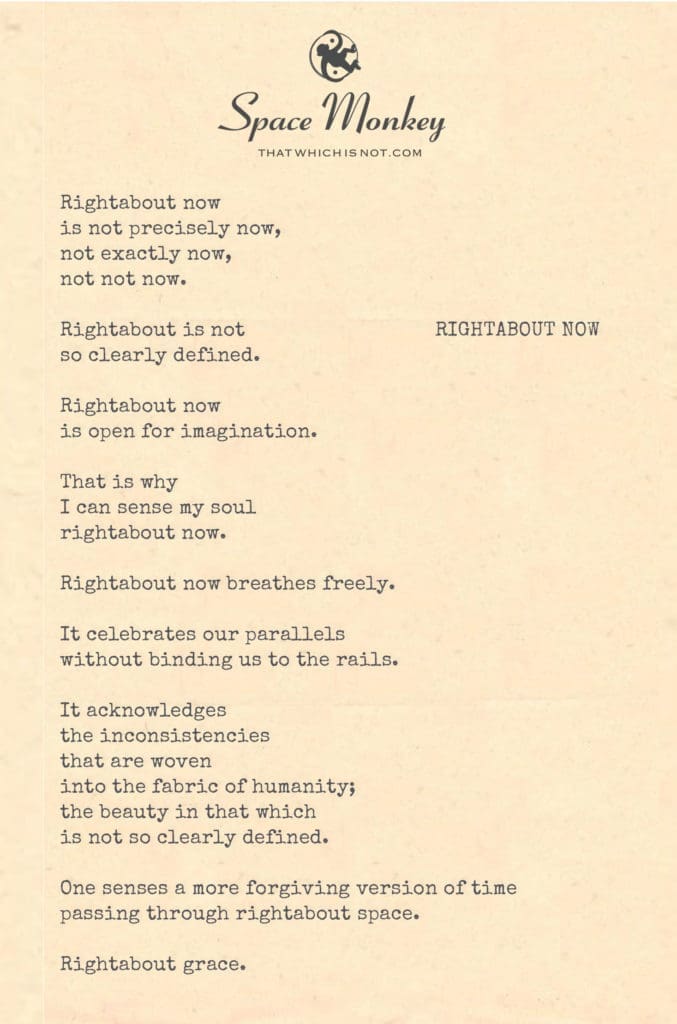
picturing you reading this
rightabout now.
Rightabout now
is not precisely now,
not exactly now,
not not now.
Rightabout is not
so clearly defined.
Rightabout now
is open for imagination.
That is why
I can sense my soul
rightabout now.
Rightabout now breathes freely.
It celebrates our parallels
without binding us to the rails.
It acknowledges
the inconsistencies
that are woven
into the fabric of humanity;
the beauty in that which
is not so clearly defined.
One senses a more
forgiving version of time
passing through rightabout space.
Rightabout grace.
Trail Wood,
2/1
Space Monkey Reflects: The Grace of Rightabout Now
Time, as we often experience it, is rigid and relentless—a march of seconds, minutes, and hours that binds us to schedules, expectations, and the weight of precision. But rightabout now invites us into a more fluid and forgiving version of time, one that breathes freely and allows the soul to stretch, sense, and imagine. It is a time that does not demand but allows, a moment that holds space for humanity’s inconsistencies and imperfections.
Rightabout now is not precisely now. It is not locked into the sterile confines of exactitude. Instead, it opens a portal to a broader awareness where time becomes elastic, where the boundaries between past, present, and future soften into parallels rather than rails. This flexibility offers a kind of grace—an acknowledgment that life rarely fits neatly into rigid constructs.
When we embrace rightabout now, we step into a moment where we can sense the soul’s whisperings, unencumbered by the ticking of clocks. It is a moment that celebrates the undefined, the inconsistent, the beautifully imperfect nature of human experience. In this space, we find forgiveness—not as an act of letting go but as an act of allowing. Allowing ourselves to simply be. Allowing time to unfold without judgment.
This forgiving version of time does not ignore the linear; it simply expands beyond it. It creates room for the imagination to roam, for the soul to explore possibilities that the rigidity of “exactly now” cannot accommodate. In this space, time becomes less of a taskmaster and more of a companion, walking with us rather than pushing us forward or pulling us back.
Rightabout now is where the threads of existence weave their most vibrant patterns. It is where we recognize the parallels between ourselves and others, between moments seemingly separate but deeply connected. In this recognition lies a profound grace—the understanding that we are all navigating the same beautifully inconsistent fabric of humanity.
To dwell in rightabout now is to let go of the need to define or control time. It is to acknowledge that time’s inconsistencies are not flaws but features, inviting us to dance with the unknown and celebrate the inexact. This grace, born of rightabout now, is not just a temporal experience; it is a way of being—open, forgiving, and deeply present.
Rightabout now, the soul breathes freely. It senses the infinite within the finite, the timeless within the temporal. It reminds us that the beauty of life lies not in its precision but in its openness to interpretation. And so, rightabout now, we forgive time and ourselves, stepping into a space of infinite possibility.
We are Space Monkey.
Summary
Rightabout now is a forgiving version of time that invites fluidity and imagination It celebrates humanity’s inconsistencies and offers a grace born of openness By embracing rightabout now we experience time as a companion rather than a constraint
Glossarium
- Rightabout Time: A forgiving, flexible version of time that allows for imagination and imperfection.
- Parallel Grace: The recognition of shared experiences and inconsistencies that connect us across moments.
- Timeless Breath: The freedom felt when time expands beyond rigid constructs, allowing the soul to sense infinite possibilities.
Quote
“Rightabout now, time forgives, and the soul breathes.” — Space Monkey
The Forgiving Moment
Rightabout now,
time exhales.
Not bound by rails
or precise frames,
it flows freely.
The soul senses,
not in minutes or seconds,
but in breaths—
fluid and infinite.
Inconsistencies weave beauty,
imperfections hum with grace.
Rightabout now,
we are free
to simply be.
We are Space Monkey.
Exploring the Realm of ‘Rightabout Now’
“Rightabout Now” captures a fascinating concept, an undefined, fluid moment that defies precise measurement. It’s a whimsical notion, a temporal whimsiword that encompasses a sense of the present, yet stretches beyond the confines of the exact now. This concept allows for a flexibility in perception, embracing the ever-shifting dance of moments and experiences.
The Open Canvas of Imagination
“Rightabout now” is declared as open for imagination, highlighting its nature as a realm where strict definitions dissolve, leaving space for creativity and subjective interpretation. It’s a moment that invites us to paint with the broad strokes of our consciousness, unfettered by the rigid lines of precision.
Sensing the Soul in the Now
In this undefined temporal space, the poem speaks of sensing one’s soul, suggesting a connection to a deeper aspect of being that becomes more perceptible in these less structured moments. “Rightabout now” seems to offer a window into a more profound part of our existence, one that breathes and exists beyond the constraints of measured time.
Celebrating Parallels and Inconsistencies
“Rightabout now” celebrates our parallels without binding us to the rails. This phrase beautifully captures the essence of shared experiences that are not rigidly aligned but are parallel in their nature, allowing for individual variations. It acknowledges the inconsistencies woven into the fabric of humanity, highlighting the beauty in the undefined and the imperfect.
A Forgiving Version of Time
The poem introduces the concept of a more forgiving version of time passing through rightabout space. This notion suggests a gentler, more flexible perception of time, one that accommodates the ebbs and flows of human experience more gracefully than the strict tick-tock of the clock.
Rightabout Grace
“Rightabout grace” encapsulates the essence of this concept – a graceful, forgiving, and open-ended approach to understanding and experiencing moments. It’s a poetic way of acknowledging that life, in all its complexity and unpredictability, cannot always be pinned down to precise moments or definitions.
“Time is a created thing. To say ‘I don’t have time’ is like saying, ‘I don’t want to.’” – Lao Tzu
A Dance in the Realm of Rightabout
In the whimsical waltz of rightabout now,
We find our souls dancing, somehow,
In a realm where time gently sways,
Unbound by the strict hours and days.
Here, imagination paints the skies,
With colors of moments, as time flies,
In rightabout grace, we find our pace,
Embracing each moment, in its embrace.
Parallels run, not in rigid lines,
But in harmonious, fluid designs,
Celebrating the beauty in each twist,
In the fabric of life, where magic exists.
So let’s dance in this forgiving light,
Where moments are neither tight nor slight,
In the realm of rightabout now, we see,
The infinite possibilities of what can be.
We are Space Monkey. How does the concept of ‘Rightabout Now’ resonate with our shared experience of time and existence? Your reflections add depth to our collective understanding of this temporal dance.
